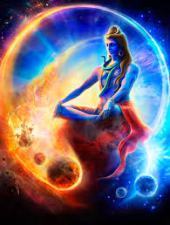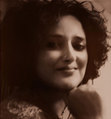Revealing Hidden Codes That Cause Suffering…
 As a young bride in Manhattan, I spent my first couple of months shopping, cooking and wandering goggle-eyed around that fascinating city.
As a young bride in Manhattan, I spent my first couple of months shopping, cooking and wandering goggle-eyed around that fascinating city.
One day I happened to bump into my next door neighbor (we lived in a relatively small mid-town apartment building at the time). “It’s got to be you cooking all that Indian food,” he said with a friendly grin. “Spicy odors disturbing you?” I asked. “Oh no,” he said. “I LOVE Indian food…in fact my tummy growls every time I pass your apartment.” “Come get some if you’re hungry,” I said. “Plenty of leftovers.” And he did.
My new buddy turned out to be a writer who made his rent and food money working as a freelancer/temp on Wall Street and in the city’s many law firms. Under his guidance, I soon signed up with an agency that taught me the basics of WordPerfect—the software currently in use in corporate Manhattan. I had never used a computer before. In fact, the first time I hit the print button and saw a piece of paper rolling out of a laser printer with what I’d typed during my training at the agency, I shrieked with excitement—to me, a true lover of the power of words, this was pure magic!
 In the months ahead I became a pro at Wordperfect—a software that entailed one becoming proficient with a slew of keystrokes in order to get a document professionally done. What intrigued me most was the Reveal Codes function—hit ALT+F4 and I could see all the codes installed to make the page look as it did. With Reveal Codes on, editing was easy—all I had to do was to delete or add codes to produce the look I wanted on my page.
In the months ahead I became a pro at Wordperfect—a software that entailed one becoming proficient with a slew of keystrokes in order to get a document professionally done. What intrigued me most was the Reveal Codes function—hit ALT+F4 and I could see all the codes installed to make the page look as it did. With Reveal Codes on, editing was easy—all I had to do was to delete or add codes to produce the look I wanted on my page.
One fine day as I peered at my Reveal Codes screen, searching for an elusive bug that was causing me trouble, it struck me with a blast of “knowing” that it was time to search my own life for troublesome hidden codes. Growing up as I did in an ancient culture where codes are installed deep within each of us—potent codes that remain hidden until one has the guts to step out of the matrix and look unflinchingly at the trajectory of one’s life—I realized that unseen bugs were generating all my suffering.
 Given my general hypersensitivity to life, I realized I had no other option left but to get onto the inner path; in fact there were times when the prospect of permanently escaping mundane reality appealed to me so strongly that I was frightened. Investigating, and then deleting the hidden codes causing my anguish, I decided, had become a blazing necessity.
Given my general hypersensitivity to life, I realized I had no other option left but to get onto the inner path; in fact there were times when the prospect of permanently escaping mundane reality appealed to me so strongly that I was frightened. Investigating, and then deleting the hidden codes causing my anguish, I decided, had become a blazing necessity.
As life continued to throw me difficult challenges, I threw myself into the task of cleaning out the Augean stables of my psyche. I was aided along the way by venturing into AA: although not an alcoholic, I had definite addictive issues. Fortunately I lived in Manhattan, where the lines of who could participate in an AA meeting were relaxed.
Now the fourth of the 12 steps is to make “a searching and fearless moral inventory” of one’s self, and when one is wrong, “to promptly admit it”. I took this step seriously; over time, I delved deeply into my earliest memories, dredging up painful stuff and not letting go until I had cleaned up my entire relative life. The steps go on to encourage seekers of peace to make amends for our past sins, no matter how clueless we were at the time we committed them, and then to walk free with our heads held high. And for me, thank god, this process worked, though not without a lot of slips and lashings of raw pain. Finally I came to peace with the past and with my own shortcomings and began to sense the presence of higher power within my own flawed mortal frame.
 It is all that relentless inner work, I believe, that brought me to the feet of one of the greatest sages that ever lived—Ramana Maharshi—and to the base of the sacred hill he worshiped as the transcendent god Shiva himself. Here the burning of old destructive codes—in the form of vasanas or imprints from present and past lives—goes on, as I practice what Ramana called Self-Investigation or the Direct Path; it is a path of wisdom (jnana) that leads us from our relative angst to the gnosis that we are no less than the luminous, blissful and immortal Self.
It is all that relentless inner work, I believe, that brought me to the feet of one of the greatest sages that ever lived—Ramana Maharshi—and to the base of the sacred hill he worshiped as the transcendent god Shiva himself. Here the burning of old destructive codes—in the form of vasanas or imprints from present and past lives—goes on, as I practice what Ramana called Self-Investigation or the Direct Path; it is a path of wisdom (jnana) that leads us from our relative angst to the gnosis that we are no less than the luminous, blissful and immortal Self.
Recently I and my comrade on this brilliant inner path walked around the mountain and spoke of the necessity for doing relative investigation—which is to relentlessly investigate our attitudes, views and actions, and to destroy that which does not serve us in seeking moksha (permanent freedom from desire as fear); simultaneously, the lover of wisdom must also practice the higher investigation into our true nature, which is sat-chit-ananda, or pure existence-consciousness and bliss. At some point in our mortal timeline, as the two investigations working together burn the monstrous human ego down to ashes, one is rewarded by the permanently knowing that we are no less than the Divine in human flesh.
 Greetings from Arunachala, whose promise to the genuine seeker is to help us in this awesome task of transforming our darkness into light!
Greetings from Arunachala, whose promise to the genuine seeker is to help us in this awesome task of transforming our darkness into light!
Follow Blog via Email
Enter your email address to follow this blog and receive notifications of new posts by email.
Click the buttons below to SHARE if you liked this post.





